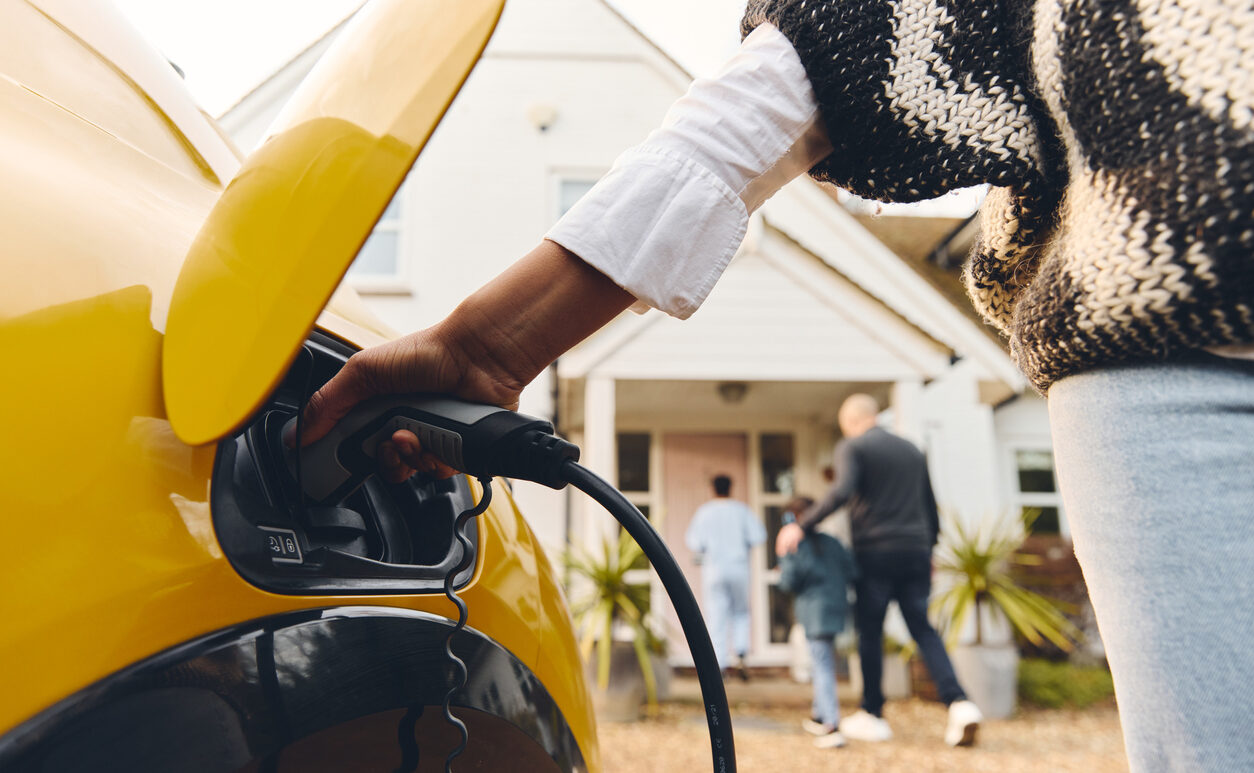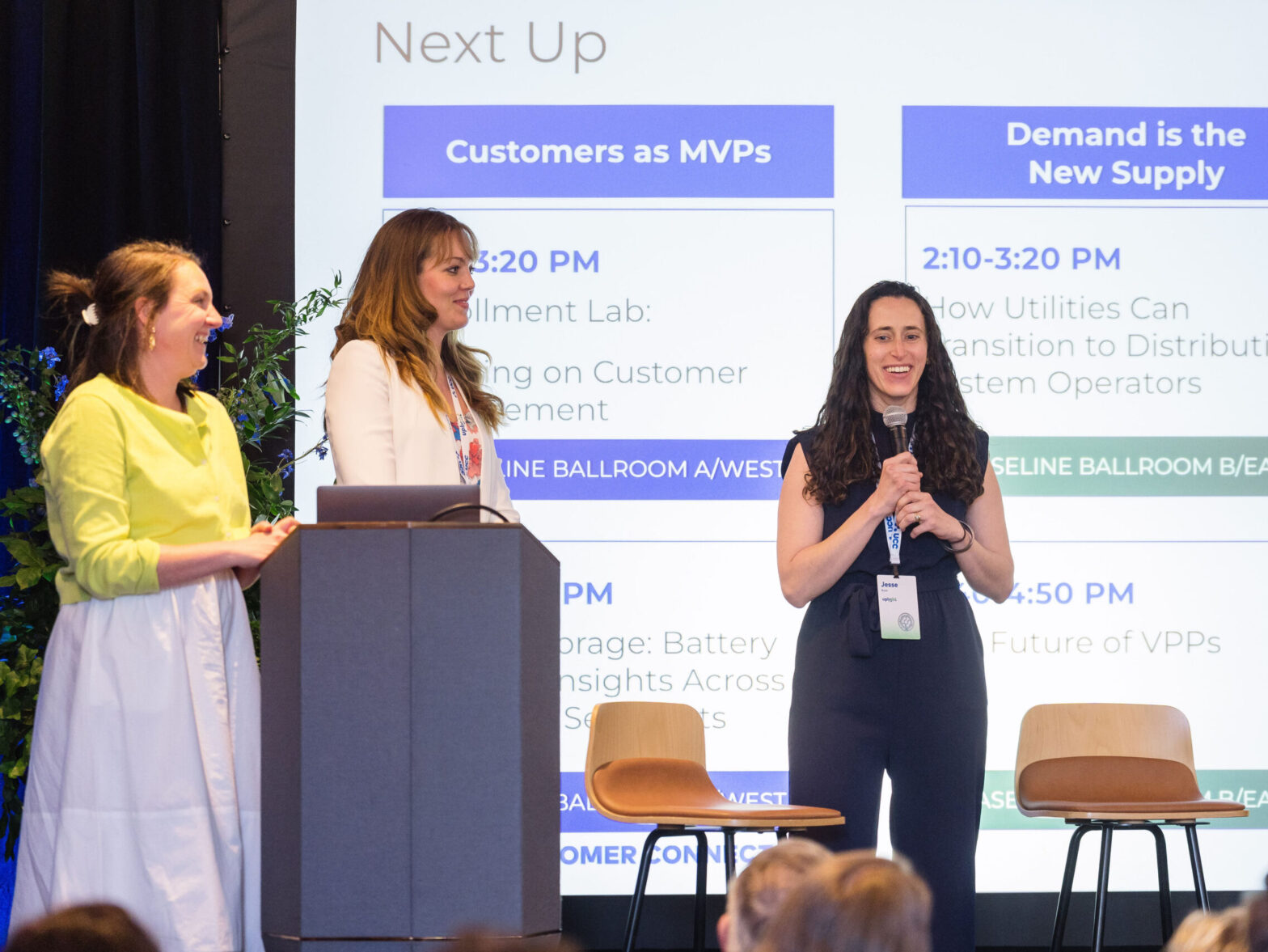As electric vehicle (EV) adoption rapidly expands and more EVs connect to the electricity grid to charge, understanding EV charging behavior and user trends will be important for energy providers. Specifically, the timing of this new load due to EVs will be important for mitigating grid impacts. This is especially true for residential charging since many EV drivers charge at their homes.
Utilities have leveraged time-of-use (TOU) electricity pricing and incentives to reduce peak system loads since they are effective at shifting residential load to times when electricity demand is typically lower. Similarly, utilities have started implementing EV-specific TOU rates to shift EV charging load to reduce demand on the electric grid during peak consumption times.
Uplight looked at EV charging data from residential Level 2 chargers enrolled in a TOU program to gain insights about EV owners and their charging behaviors when TOU pricing incentives are present. We found that EV-specific TOU programs, although effective at shifting charging to off-peak periods, may present challenges at scale. These findings suggest that there are opportunities to further optimize added load from EVs by leveraging the flexibility of EV charging.
There are two components of charging that we looked at for this analysis and that provide meaningful insight into user behavior: plug sessions and charging periods. Plug sessions refer to the time window starting when a user plugs in and ending when a user unplugs their EV. Charging periods are more specifically when the EV is actively charging, which may not exactly align to the plug session window. Many vehicle and equipment manufacturers make it easy for the user to schedule when their EV charging occurs either through an interface in the EV itself or the charger.
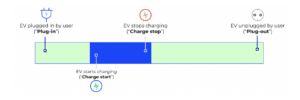
Trends indicate EV users in a TOU program charge their vehicles primarily during off-peak hours without changing when they plug in or unplug their car.
We found that EV users participating in a TOU program plug in or unplug their vehicles at varied times of day but charging times are more consolidated during the off-peak period. On weekdays we saw overall that most plug-ins occur in the evening between 5 p.m. and 10 p.m., with most plug-outs occurring in the morning between 7 a.m. and 9 a.m.. Meanwhile, charging primarily occurred during the off-peak periods with 50% of sessions charging exclusively during that time. This is an indicator that EV plug times are related to user behavior and daily routines while charging is more aligned to the TOU program schedule, with evidence that some users leverage scheduling to align charging to off-peak periods.
Users, however, often start charging right at the beginning of the off-peak period, often within the first minute. For charging periods that started between 9 p.m. and 10 p.m. on weekdays, we found that 34% started within the first minute of the hour (9:00 – 9:01 p.m.), which corresponds to about 7.5% of all weekday sessions. The consolidation of this EV load poses the risk of a demand spike at the start of the off-peak period, which could place strain on the grid.
Figure 2 shows the plug-in and charge start times and Figure 3 shows the charge stop and unplug times.
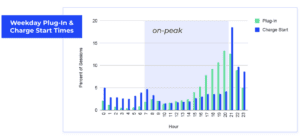
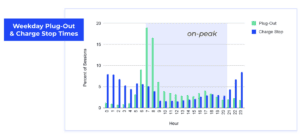
Figures 2 & 3: Graphs show the percentage of sessions associated with a plug-in/plug-out or charge start/stop for each hour of the day. The green bars are the plug hour and the blue bars are the charge hour. Each hour is the start of the hour period, where 8 represents 8 a.m. – 9 a.m. The shaded region represents the on-peak period from 7 a.m. to 9 p.m.
EV user plug-in/out behavior offers the opportunity to shift EV charging load.
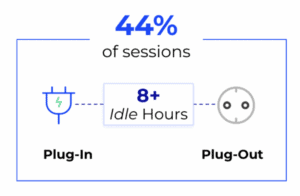
EV owners often leave their vehicles plugged in overnight and for a period longer than what is needed to complete charging. For weekday sessions, we found the average charging duration was 2.12 hours, while the average plug duration was 10.88 hours. This means there is a decent amount of time when the EV is plugged in and not actively charging.

We found that for 44% of plug sessions, EVs were plugged in but not actively charging for 8 hours or more. Even under a TOU program where charge start might be delayed, many sessions have extra hours plugged in after charging is complete. After charging completed, 48% of plug sessions had more than 4 hours before the EV was unplugged. The large window of idle time, or time when the vehicle is plugged in but not charging, provides ample opportunity for shifting load while still allowing for the car to be sufficiently charged by the time an EV owner needs it.
What does this mean for EV charging programs?
Utilities can go beyond TOU programs to take advantage of the EV charging flexibility. The ability to schedule charging coupled with the flexibility of when to charge provides an opportunity for managed charging to be successful. Managed charging can spread out the overall EV charging load through passive and or active programs. Utilities can implement both passive and active managed charging to shift EV charging load but there are control and cost trade-offs between the two options.
Passive managed charging, involving creating monetary structures to encourage off-peak charging such as incentives or TOU rate schedules, focuses on shifting user behavior indirectly. Active managed charging involves the direct control of charging devices which allows utilities to strategically optimize charging based on the needs of the grid and EV drivers.
For both passive and active managed charging programs EV charging data is essential. EV charging data can inform program design, enable implementation, and provide insights into user behavior and program effectiveness. Uplight, as a leader in customer-centric demand management programs, including one of the largest residential EV managed charging programs in the country, is well positioned to support utilities in program design, program facilitation, and grid planning.

